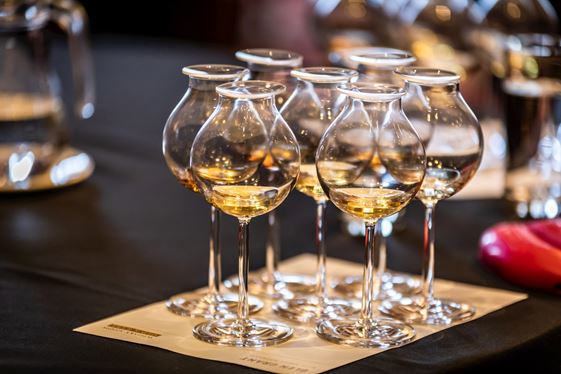-
Ardbeg
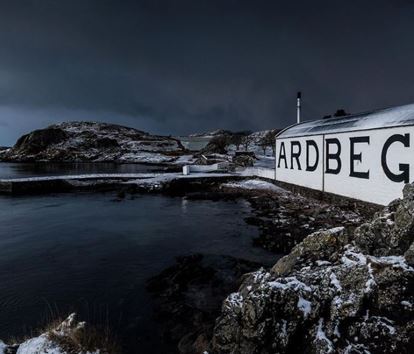
While Islay’s whisky distilleries are almost as famous for the dedication of their fans as they are their whiskies, it’s Ardbeg’s who have, in more recent years, consistently topped the charts as the most fanatical. Since the distillery’s revival in 1997, legions of whisky fans have turned their eyes to the most eastern of the Kildalton distillers, with the infamous Ardbeg Committee now consisting of members around the world.
While the distillery is now going from strength to strength, what was it that grabbed those early fans? It was drams that they found hiding in the back of the warehouses when the distillery got back into production, cracked open to sustain them while they recreated the regular range – whiskies from the 1970s that gave a look into a fabled golden era of production at the distillery. In this class, we are going to open and taste six of the finest Ardbegs that have ever been released.
If you’re a peat freak and an Ardbeg fan, you can’t miss this – it’s the opportunity of a lifetime.
This set contains a 1cl sample of each of the following whiskies.
Ardbeg 1974, Bot.1993, Connoisseurs Choice, 40%
Sukhinder Singh – One of the first Ardbegs that I fell in love with. There seem to be different styles of these depending on bottling date: some are typical peaty, tarry, smoky with coastal characters; others are more rounded and fruitier, with Pineapple, citrus and less peat; and then there are those with a combination of the two.
Ardbeg 1977, 46%
Sukhinder Singh – I really like this one but unknown by many. It was not available in big quantities and is rarer than the other vintages. Multi layered, richer and oilier than the 1975 and 1978.
Ardbeg 36 Year Old, 60th Anniversary, 43.5%
Sukhinder Singh – This was distilled in 1973, one of the great vintages for Ardbeg. There were many bottlings by Douglas Laing, all extremely good. This is one of the oldest they released: lower strength and more concentrated, with flavours of lemon oil, fruit and peat. Very smooth with a lingering smoky finish.
Ardbeg 1974 Provenance, Europe Release, 55.6%
Sukhinder Singh – This is the European release of this legendary bottling, considered by some as one of the best Ardbegs ever released from 1974, even more so than the single casks – these old 1974s are what makes Ardbeg special. I find this whisky has got better over time as this is a marriage of many casks.
Ardbeg 1979, 17 Year Old, Cask #11928, Adelphi, 64.3%
Sukhinder Singh – Adelphi were privileged to have access directly to the distillery stock and bottled a number of single casks, which are all super. This is a big and powerful whisky, hopefully it shows well and surprises you all.
Ardbeg 1976 Manager's Choice, Sherry Cask #2391, 56%
Sukhinder Singh – Peat and sherry does not always work but when it does work it can be incredible. Bottled in 1999 and sold only at the distillery, this was a bit of a revelation, a number of sister casks followed over the next several years. All are superb but this one possibly takes the crown. Rich and sherried, peaty and fruity, with coffee liqueur and Cuban cigars...
-
Glenlivet Masterclass
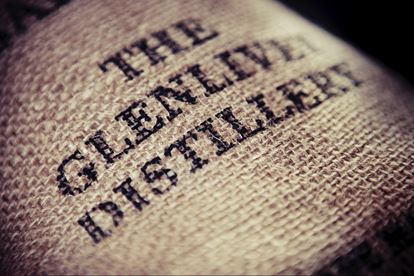
The banks of the river Livet that winds through Speyside offered the perfect landscape for the illicit whisky maker. The fertile soil was good for growing barley and the sheltered hills offered plenty a spot to hide your still. In this crucible of whisky making, one of the most iconic names in single malt was born: The Glenlivet.
For many years the name ‘Glenlivet’ was synonymous with the region and the whisky produced there. It’s historically been used to refer to applied to many distilleries in Strathspey, evoking outlaw stillmen and quality highland malt. But today there is only one definite article, the Glenlivet.
Bottlings of Glenlivet single malt were produced as far back as the 19th century, which makes for an incredible archive of whisky containing a huge range of different styles. The distillers have never stood still and the spirit character has constantly evolved over the years, creating some of the most iconic old and rare bottlings in existence.
Varying style, versatile spirit, and an incredible archive of expressions make the Glenlivet an ideal candidate for a Whisky Show Old & Rare deep dive. Join us in tasting some of the distillery’s finest whiskies and explore the many sides of Glenlivet’s character.
This set contains a 1cl sample of each of the following whiskies.
Glenlivet Bot.1950s, 80º Proof UK
Angus MacRaild – A beautiful old bottling and a textbook example of how this distillery's official offerings and livery have remained present and iconic for so long. These bottlings tend to be powerful, with elements of peat and immense fatty and textural distillate character. Brilliant examples of how Glenlivet used to be a much heavier, more highland, style of malt. These bottles are now very rare, and often wonderful and illuminating to drink.
Glenlivet 25 Year Old Silver Jubilee, 43%
Sukhinder Singh – Distilled in 1952, this is a delicate whisky with tons of character even at low strength. This bottling is often dismissed by people, however I feel it is underrated and hence still available at a good price. Old Glenlivets have a lot of texture – expect minerality, poire eau de vie, melon, and tea.
Glenlivet 20 Year Old Baretto, Bot.1960s, 45.7%
Angus MacRaild – This series of official bottlings of Glenlivet for Italy – that also included 12-, 15- and 18-year-old whiskies – are brilliant examples of the elegant, waxy and fruity old-style Glenlivet from this era. A benchmark bottling and a great illustration of what has made this distillery's official releases so seductive to drinkers over the decades.
Glenlivet 1956, bot.1968 for Knapkin Syndicate, 80º Proof UK
Angus MacRaild – A rare and elusive private independent bottling of Glenlivet. There are many such rare bottlings littered throughout whisky history – one of the reasons why Glenlivet is such a ubiquitous name – because the distillery held such a reputation that many people sought it for their own products. Another natural, and excellent look at the heyday of this distillery's old-style production.
Glenlivet 15 Year Old, Bot.1950s, Gordon & MacPhail, 46%
Sukhinder Singh - This is one of the oldest and rarest bottlings from G&M, possibly even one the first ever bottlings done by them. The whisky has a stopper cork, it is bottled at 46%, and label states matured in sherry wood for 15 years. We all know the quality of the old sherry casks from G&M, so I am extremely excited to be trying this.
Glenlivet 15 year Old, Bot.1980s, Gordon & MacPhail, 46%
Sukhinder Singh – This is only from the 1980s, but being fairly dark and bottled at the higher strength these are always enjoyable – the previous versions I have tried have a great balance of fruit and oak. This would have been distilled in late 60s or early 70s, which was the golden era for many distilleries, including Glenlivet.
-
Naked Distillate
While much of modern whisky making focuses on the cask and the age of a whisky, it can be incredibly rewarding to look beyond the oak to the spirit beneath. With this tasting, we dive deep into distillery character and look at what makes these old whiskies so special. A celebration of pure, characterful, idiosyncratic distillates.
In the very earliest days of whisky history, the predecessors of modern malt were rough and ready spirits – clear in colour and often requiring a little sweeting or flavouring to help them down. The advent of cask maturation was a significant step on the journey from these humble beginnings to the whisky we know and love today.
However, it’s true to say that well into the 20th century distilleries across Scotland relied more on the character of their spirit than the flavours afforded by oak casks. One of the real draws of old and rare whisky is that the raw distillate at its core is often more expressive than its present-day counterparts. The bottlings chosen for this session are young, often high strength, and bottled in their natural form with minimal intervention. Each one displays the bare bones of their respective distillery characteristics in beautiful detail. It's a style that is unashamedly geeky and shines a light on the nuts and bolts of old school whisky making.
This set contains a 1cl sample of each of the following whiskies.
Blair Athol 8 Year Old, Distillery Bottling, 80º Proof UK
Angus MacRaild – These bottlings are benchmark examples of naked, old-style, distillate-driven Highland malt whisky. This is one of the earlier batches and these pale, young, often refill-matured examples of Blair Athol at a solid 80º proof are exemplary of the legendary production eras of the late 1940s/early 1950s.
Old Pulteney, Cadenhead, 1960s, 85º Proof UK
Angus MacRaild – These early Cadenhead bottlings are almost always stunning examples of vividly old style, historic malt whisky, often presented at higher ABVs and from plain wood. This Pulteney is pale and at the fascinating ABV of 48.5%. It's a dram I've wanted to try ever since I first saw this bottling, and Pulteney from this era should be comfortably 1950s' distillate and proper old style highland malt, so it's very exciting to include it in this class.
Glen Grant 8 Year Old, Gordon & MacPhail, 100º Proof UK
Angus MacRaild - A naked distillate class would not be complete without an old 100º proof Glen Grant. Pale, high ABV and with a well-preserved level, this should be a proper time capsule and a clear window on one of the most beautiful of distillates: old-style Glen Grant.
Glenfarclas 8 Year Old, Distillery Bottling, 100º Proof UK
Angus MacRaild – Everyone knows the much darker and iconic series of 8-year-old 105 proof bottlings. However, this paler 100º proof version is much rarer and should offer a fascinating take on Glenfarclas's famously weighty distillate from this older production era.
Balvenie 1975, Bot.1985, Robert Watson, 57.1%
Angus MacRaild – Balvenie distilled in this era was a much fatter, waxier style of malt, much more 'old highlands' in character than it is today. These rarely seen Robert Watson bottlings are always a brilliant window into that distillate style. Often young examples at cask strength, they're the closest we can get to tasting these historic Balvenie distillate styles as they were at the time of production and bottling.
Port Ellen 10 Year Old, Signatory, 58.4% ABV
Angus MacRaild – So much focus is heaped upon the older Port Ellen bottlings that we often overlook the younger ones. These bottles give lie to the notion that Port Ellen was closed for issues around quality. These natural strength, younger bottlings from Signatory are a powerful demonstration of the purity, power and charisma that Port Ellen could display in youth.
-
Old-Style Sherry
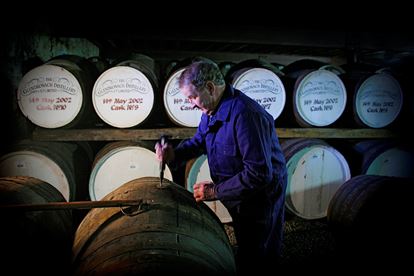
The words ‘sherry cask’ have meant many things over the years and still do to this day. As the whisky industry has changed, so have the casks supplied from Spain and the way in which they have found their way to Scotland – once the by-product of transporting sherry to thirsty drinkers, they are now specially made to careful specification.
With those changes in cask have come changes in the whiskies matured in them, and in this class, we’re going to taste our way through a selection of drams which show quite just how much sherry-matured whisky has changed over the decades, as well as how variable and different old sherry-cask whiskies were to each other.
This set contains a 1cl sample of each of the following whiskies.
Glendronach 12 Year Old, Bot.1980s, 43%
Angus MacRaild – What you might easily call 'Macallan killers', these super dark batches of 12-year-old Glendronach contained some of the most stunningly earthy, darkly fruity and luscious sherried whisky. The direct-fired, heavy Glendronach distillate matches perfectly with brilliant sherrywood in these bottlings.
Glenrothes 1954, 28 Year Old, Sherry Cask, Connoisseurs Choice, 40%
Sukhinder Singh – Old Connoisseur’s Choice can be a miss or hit, but this one is absolutely superb. Old school sherry at its best even at 40%, expect a rich, fruity and moreish dram. Glenrothes is a classic Speyside malt, and liquid from this era has a slight oiliness, lots of candied orange, and dark fruits.
Glenfarclas 15 Year Old, Bot.1970s, 46%
Sukhinder Singh – Somehow always forgotten, Glenfarclas is a big oily spirit which needs decades to develop and15-years-old is really the youngest it comes to life at. These old 1970s' bottlings always have the autumnal, forest floor, mushroom, musty character which I really like. The 15s are always bottled at 46%, which helps amplify the character of the distillery.
Glen Grant 1967, 30 Year Old, Signatory, Cask #2390, 51.8%
Jonny McMillan – Glen Grant is one of those distilleries that works perfectly in sherry wood and always somehow manages to show plenty of distillery character over even the most powerful of casks. This bottling, from the mighty Signatory Vintages shows a wonderful balance of fruity old style Speyside distillate with wonderfully rich old sherry wood.
Tamnavulin 1966, 35 Year Old, Sherry Cask, Distillery Bottling, 52.6%
Jonny McMillan – Although there's perhaps not a lot of competition, I think this probably is the best Tamnavulin ever bottled... It's a thick, chewy style of sherry wood moving almost towards a cognac-like rancio. I've been saving this bottle for some time, and I think it'll be able to stand up to the more famous names in the line-up.
Tamdhu 1973, Bot.2008, Gordon & MacPhail, Reserve Cask #3230, 56%
Angus MacRaild – One of the best kept secrets for many years in whisky was old school sherried Tamdhu. These early 1970s' distillations matured full term in proper, old-school sherry casks are almost always sublime. This one is rich, fat, uber-fruity and a gorgeous demonstration of this legendary style.
-
Talisker
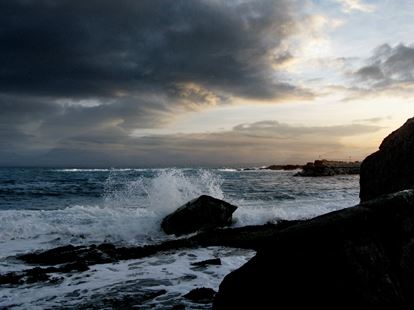
Hiding on the shores of Loch Harport in the west of the Isle of Skye, Talisker is surprisingly hard to get to. Despite being connected to the mainland by bridge since the 1990s, Skye still maintains a feeling of wildness and remoteness, and the distillery and its spirit reflect that feel. Despite that, its whiskies remain the flagship single malt range for owners Diageo, and Talisker 10 remains a mainstay of bars and drinkers around the world.
Talisker is an enigmatic whisky, with a style unemulated across Scotland and an old-fashioned feel that makes it a great fit for Whisky Show: Old & Rare, even in its most modern expressions. However, as you step back through time, you can see how the distillery has become so loved and how its current character has been shaped by the decades.
Available as a single malt whisky for well over a century – or a 'self whisky' as it was known in the earlier days – Talisker has been sought after by drinkers for as long as it has been known about beyond the shores of Skye. This fame means that there is an archive of bottlings that gives us an insight into the distillery, making it an ideal candidate for a Whisky Show: Old & Rare examination.
This set contains a 1cl sample of each of the following whiskies.
Talisker Pure Malt, Bot.1950s, 46%
Sukhinder Singh – A different style of Talisker, not the bold style we are used to. This should be more elegant and fruity, with less peat and smoke due to it being in the bottle for around 70 years, but amazing none the less. This will be a journey through time and an education on old bottle conditioning.
Talisker 10 Year Old, Distillery Bottling, Bot.1980s, 45.8%
Angus MacRaild – From the dawn of the iconic Classic Malts series, this is one of the batches that created a reputation of a legendary bottling that is still terrific to this day. These early batches of Talisker 10 Year Old were often very vividly fruity with a sublimely elegant peat smoke – a style apart from Islay or Orkney, individualistic and unique to Skye.
Talisker Bot.1960s, Black Label, 40%
Angus MacRaild – A darker, no-age-statement vatting from Gordon & MacPhail. These bottlings, though humble, can often be utterly superb, showcasing 1960s' and 1950s' distillate with the most divine old-school sherry-cask maturation. A match made in heaven, as old style Talisker pairs sublimely with these sorts of old-style, uber-fruity sherry casks.
Secret Stills 1.2 (Talisker) 1986, Gordon & MacPhail, 45%
Jonny McMillan – Talisker and sherry wood is a glorious combination and this bottling from Gordon & MacPhail is a prime example. It's a huge whisky, but with very clean sherry influence – thick as tar and incredibly complex.
Talisker 1958, Bot.1973, Berry Bros & Rudd, 40%
Sukhinder Singh – The poise of the Talisker style with sherry is always a pleasure. I'm not sure what to expect, but it could be a big heavy meaty style that's usually reminiscent of some of the old G&Ms or it could be a more refined style as in the old distillery bottlings. This is floor malted, 15 years old and bottled at 40%, and will be an education after 50 years mellowing in bottle.
Talisker 1975, 25 Years Old, Bot.2001, Official US release
Jonny McMillan – I just adore the official release Talisker 25 and 30 year olds, they're always pure, peppery, peaty coastal beauties. This bottling is one of the best in my opinion: 1975 bottled at 25 years old for the US and shows bags of fruit alongside the usual Talisker notes.

